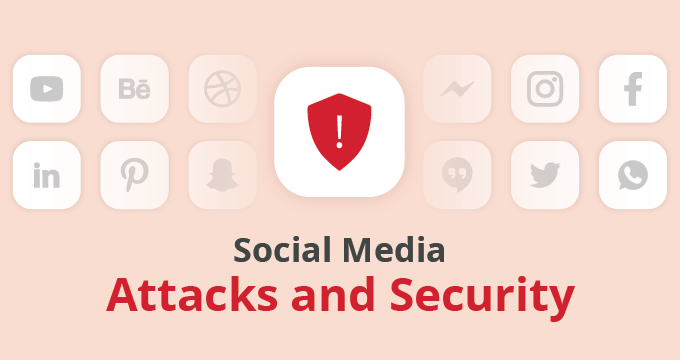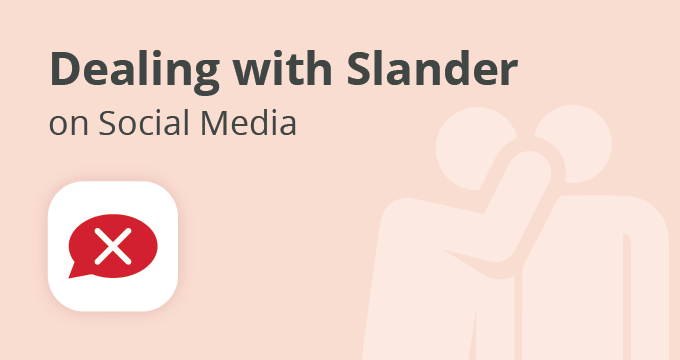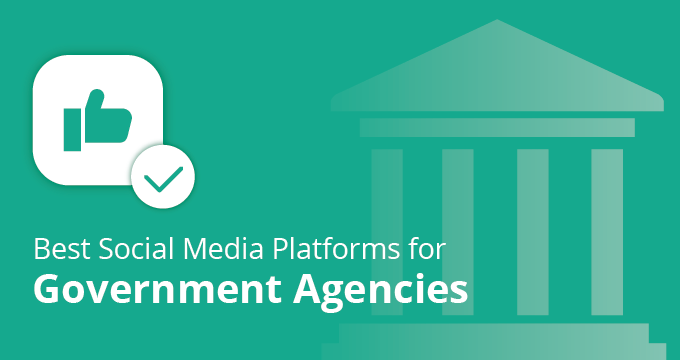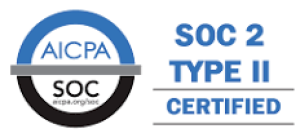More than 4.5 billion people all around the world use social media.
These platforms come with numerous benefits, as they allow users to stay in touch with their friends and family, expand their professional networks, or connect with people with similar interests.
However, the popularity of social media also attracts cyber criminals and other malicious actors, as it’s a very convenient avenue for spreading malware or social media attacks.
That’s why it’s important to discuss social media threats and learn how to protect your company from social media cyber attacks.
What Is Considered a Threat on Social Media?
A social media threat is defined as any situation that can compromise the safety of the business and personal accounts.
Many people take social media cyber security less seriously, which can result in inadvertently facilitating social media attacks.
Clicking on different links, opening attachments other people send them and playing quizzes and games puts people at all kinds of social media risks.
And all this makes it easier for cybercriminals to steal their credentials and personal information or even lock them out of their accounts.
How Do Social Media Attacks Happen?
Thanks to the number of social media platforms and activities on them, hackers have a lot of different opportunities to plan and execute successful social media attacks. The methods cyber criminals use depend on the platform they want to target.
Social Media Attacks on Facebook
Since Facebook users can keep their profile data private, attackers use a sneaky tactic of worming their way into the network of their friends.
While preparing a cyber-attack on social media, hackers send friend requests to people from their target’s list of friends. This way, the targeted person will be more likely to accept a friend request from someone with whom they have several mutual friends.
Social Media Attacks on LinkedIn
Being a social media platform for professionals, LinkedIn is a great place for cybercriminals to obtain business emails of employees from an organization and use them for phishing attacks.
Most LinkedIn users list their titles and contact information on their profiles. So, attackers can use these publicly available details to identify employees within a single company and find the ones with access to sensitive financial or customer information and target them.
Stealing Passwords
Once they become part of the target user’s network, hackers are able to see what they post on social media. The practice of oversharing is what makes people susceptible and vulnerable to social media attacks.
For example, birthdays, kids’ or pets’ names, and other highly personal information that people recklessly make available on social media platforms allow hackers to guess passwords or security questions used for resetting passwords.
What Methods Are Used for Social Media Attacks?
Once cybercriminals collect the personal data they need, they can prepare and launch social media attacks. Depending on what their goal is, there are different methods they can use, the most common ones being:
- Social engineering
- Brand impersonation
- Phishing
- Fake giveaways
Social Engineering
Social engineering is a term used to describe a number of sophisticated social media cyber threats used to gain the target user’s trust and make them make security mistakes or share sensitive information.
After picking a victim, cybercriminals investigate their social media behavior, online habits, and potential vulnerabilities, such as weak security protocols. Then, with all the information they have collected, perpetrators try to engage the target and psychologically manipulate them into divulging passwords and credentials or even providing access to their computers.
For example, these social media attacks frequently use baiting, that is, offering the target something they want or are interested in, such as downloading the latest blockbuster or some useful software for free. Download links or databases themselves are loaded with malware that infects the victim’s computer.
Brand Impersonation
This kind of social media threat is also pretty common. The FBI estimates that the U.S. companies lost about $2 billion to brand impersonation attacks in 2020.
Such scams are used to steal your customers’ personal information, thus eroding the credibility of your business.
Brand impersonation refers to the act of creating fake social media accounts that use the name, logo, image, and other identifying elements of a particular company with the purpose of committing fraud.
By doing so, hackers trick social media users into believing they’re interacting with a particular brand and ask them to provide their personal information, such as account credentials or credit card numbers, or even send money.
Phishing
Phishing can come in the form of an email or private message on social media.
Perpetrators pretend to be a legit contact or a reputable company and send a link to a fraudulent replica of a website. These social media attacks are very effective since the spoof sites of a bank or an online store look surprisingly real, so unsuspecting victims enter their credentials believing they’re interacting with a legitimate business.
Fake Giveaways
Many brands use giveaways to generate likes, clicks, and traffic, and hackers have noticed that people readily participate in these programs.
So, they create fake pages using the names of popular brands where they allegedly offer expensive prizes for the first couple of users who like or share the giveaway on their profiles. Apart from serving as “like farms”, fake giveaways often require participants to share their email addresses and other personal information.
How to Prevent Social Media Attacks?
Although brands themselves can fall victim to social media attacks through brand impersonation, their employees also pose a security risk if their online behavior is reckless. Hackers can easily find their way into an organization’s network through infected employee computers.
That’s why it’s of critical importance to have a social media security policy in place.
Here’s what you can do to keep social media attacks at bay and protect your company from malicious agents.
1. Educate Your Employees
In many cases, employees aren’t aware of all the social media threats, and this ignorance can be expensive.
You should leave nothing to chance and rely on your employees to educate themselves. Organizing regular training programs is a surefire way of ensuring that your employees are well-educated regarding how to stay safe on social media.
2. Install Ad Blockers
Install ad blockers on their corporate devices to minimize the odds that your employees will click on an infected link and jeopardize the entire organization’s network.
If that’s not possible, ask them not to click on any ads on social media. Some companies even forbid their employees to use social media while at work as a measure of precaution.
3. Avoid Using Public Wi-Fi Spots
One of the easiest ways of performing a social media attack is by hacking a public Wi-Fi hotspot and gaining access to all the devices connected to it.
That’s why your employees should never use public Wi-Fi hotspots when accessing a business network. Warn them that even if they’re using their personal devices, they can have their credentials stolen.
4. Change Passwords
Encourage your employees to change all their passwords regularly, including the ones to their social media accounts.
This simple tactic reduces the risk of getting their password stolen, which in turn, keeps their computers and your entire network safer.
5. Never Share Passwords with Others
Sharing passwords with other employees from the same department, especially via social media messengers, is extremely risky. Sometimes these messages can be intercepted by hackers, while a shared password can spiral out of control and increase the account’s susceptibility to social media attacks.
There are many social media security risks that can hurt your organization. Apart from taking all these measures and educating your employees, it’s a good idea to learn more about how Jatheon’s social media archiving tool can improve the security of your organization online.
Contact us for more information, book a demo and find out all the benefits of adding an extra layer of security.
Read Next:How to Manage Risks of Internal Social Media Platforms |











